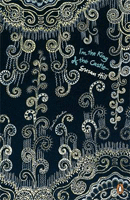Author: Susan Hill
Publisher: Penguin Decades
Published: 1st April 2010 (Originally 1970)
RRP: £8.99
This is the story of a boy named Edmund Hooper who lives in a grand old house with his widowed father and an old collection of moths. Mrs Kingshaw, a divorcee, is employed to live with them as a house keeper and brings her son Charles with her. The boys are made to spend time with each other by their parents but they instantly take a dislike to each other. Hooper intimidates Kingshaw and belittles him constantly, even Kingshaw's plan of escaping the bullying is ruined when Hooper follows him into the woods. They get lost, Hooper nearly dies and Kingshaw becomes more confident in who is, however when they are found everything reverts back to normal with Hooper dominating him. Their parents get closer and are oblivious to the torment happening under their noses until it's too late.
The blurb of the book describes the story as 'a chilling portrayal of childhood, cruelty and persecution, of parental blindness and of our own ambivalence to what are supposed to be the happiest days of our lives.' I think that sounds like quite a gripping storyline. Yes, the book certainly does explore the relationship between the two boys in great depth. Yes, we are given valuable insights in to the minds of each of the children to help deepen our understanding of the cruelty going on. Yes, the parents are too wrapped up in their own blossoming relationship to contemplate the effect on their children. Yes, the mother does come off looking particularly poor. But...the book was just not interesting.
What I found particularly boring about this book was that nothing really happened. I don't feel that the bullying that went on was particularly intense, it was just a lot of boys calling each other babies. I got that the whole experience in real like for a child like Kingshaw would've been intense and horrific, but this is story-telling, you've got to grip your reader and it just wasn't full-on enough. On the whole the book was a series of incidents, most of which felt insignificant because I just didn't care about any of the characters at all. All the way through I was just thinking 'What now?' and tapping my foot impatiently counting down the pages. I can imagine, because of the amount of speech, that this book would be better performed on stage as a play. It may appeal to those who want to read about realistic scenarios but I want escapism, something completely apart from everyday experiences.













